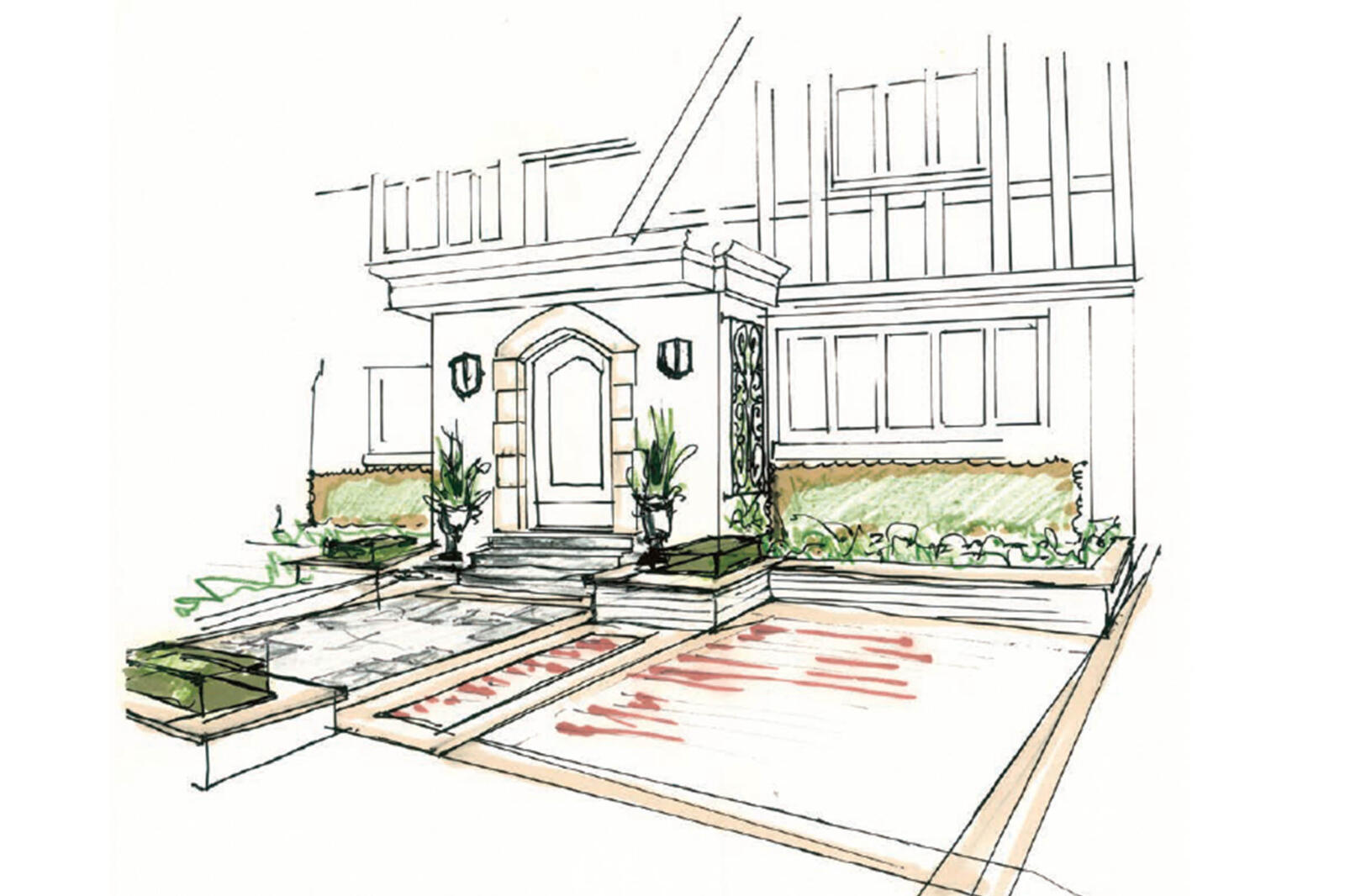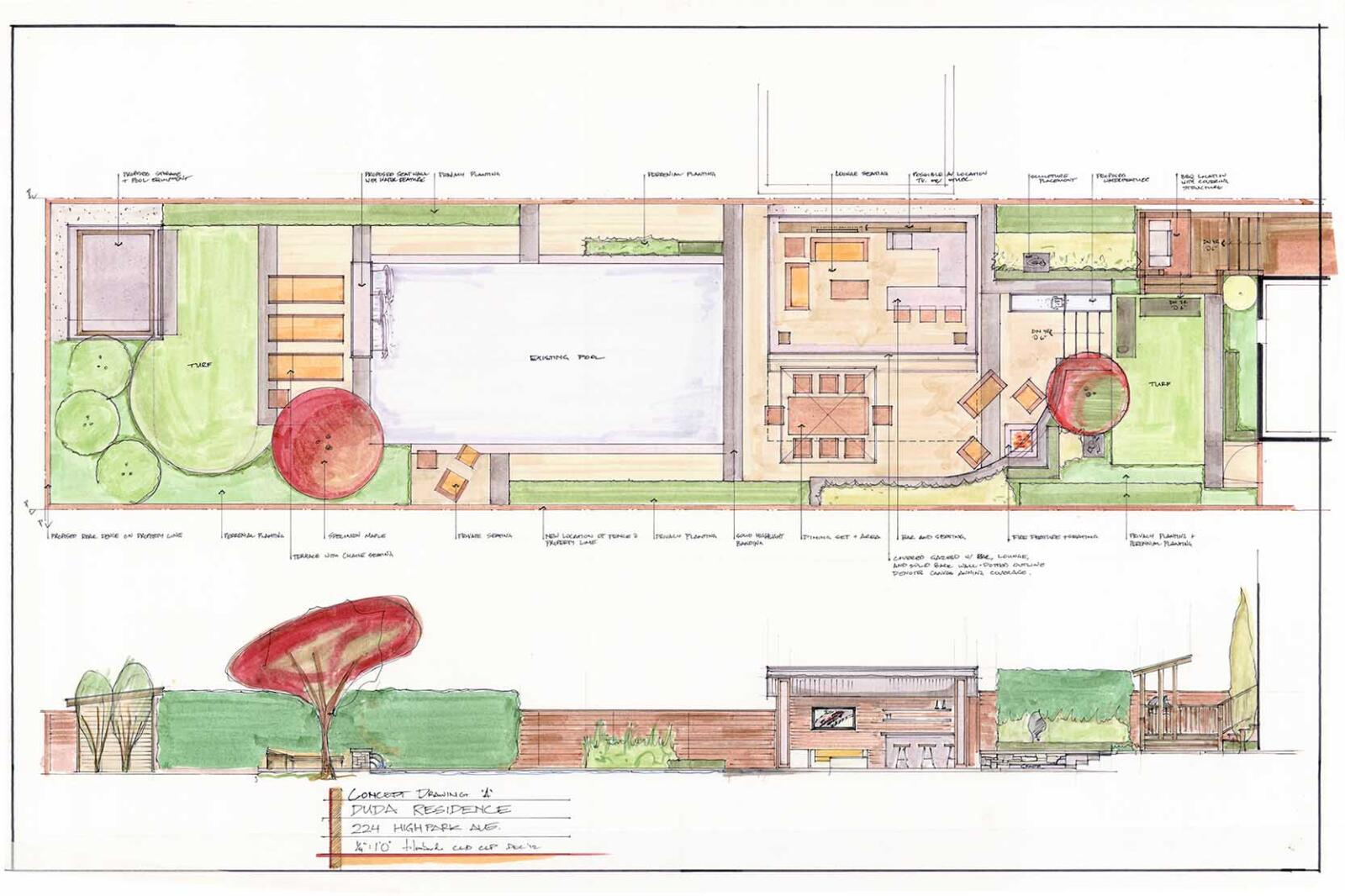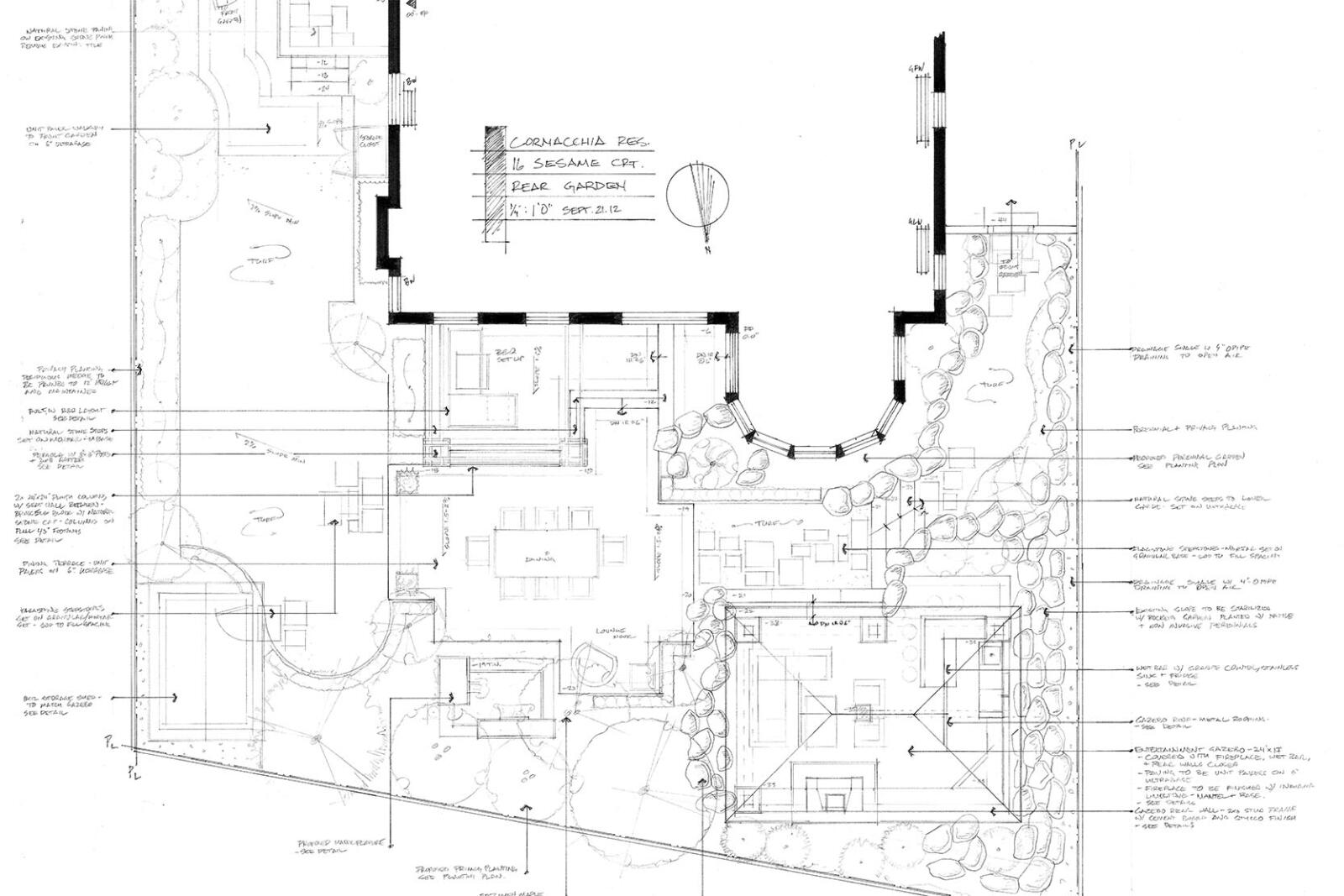
Are landscape designers who draw by hand a dying breed?
Are landscape designers who draw by hand a dying breed?
BY SCOTT BARBER
Landscape designers and architects have used Computer-Aided Design (CAD) software since the 1970s, and the technology has come a long way over the last 50 years. With software improving every year, empowering professionals to create sophisticated designs with precision and efficiency, is there still a place for the drafting table in a modern design studio?
Tony Lombardi isn’t ready to put down his pencil just yet. As the owner and principal of Dr. Landscape, a boutique landscape design, installation and landscape and garden management firm based in Toronto, Ont., Lombardi uses a combination of CAD software and hand drawing. However, it’s clear where his passion lies.

Backyard concept with elevation by Dr. Landscape.
“Being resistant to change and new technologies isn’t usually good,” Lombardi said. “I think it’s important to introduce new tools and ensure you have as much as you can use in your toolbox. I also think there’s an incomparable value in being able to draw by hand. You can’t plant flowers with a machine, right? You’ve got to do it with your hands. You’ve got to touch the earth. You’ve got to know where plants will grow and thrive and then use your hand shovel and put that plant in the ground, carefully and with love. There are no robots that do that, maybe one day, but it’d be a sad day if that happened. The beauty of nature is being able to interact with it on a very personal level. If you take that thought and incorporate it into design and drawing, I think the true enjoyment of drawing by hand is just that interaction. That personal touch, that pen to paper, the connection.”
While his creative spark comes at the drafting table, Lombardi knows other professionals have a similar connection to design software.
“I think the most important things for designers are their passion and creativity,” Lombardi said. “For me, that passion and creativity comes out at the drafting table. I’m sure somebody who designs with a computer could be equally passionate and creative. It’s almost like a different wavelength, but the purpose and the drive are still the same. I think it’s how you’re wired, but it’s that interaction to come up with an idea from your brain, put it on paper or the screen and then make it a reality.”
 Concept rendering by Dr. Landscape.
Concept rendering by Dr. Landscape.
Keeping perspective
Paul Brydges shares the belief that there is something intangible — yet invaluable, about drawing designs by hand.
“When I’m drawing on my board, I put it on a 36- by 48-inch sheet,” said Brydges, the founder and principal landscape architect of the Guelph, Ont.-based Brydges Landscape Architecture. “I’m looking at the entire property as a holistic element. So the front yard relates to the backyard, which relates to the side yard, and I can see the whole thing I’m working on at once… If I want to make a change or I get stuck on something, I can just move to the other side of the property. I don’t have to change screens. I don’t have to change my focus or my view. It’s almost like you’re walking through the space. It keeps you working on a human scale. And that’s what we’re designing for. So it keeps us working very clearly at the proper human scale to visually and mentally travel through the space.”
That perspective is also essential to Lombardi. “Seeing the whole picture is what I enjoy more about drawing by hand,” Lombardi said. “As opposed to when you’re on a computer, you either have to have a massive screen to do that, or to focus on a small area and zoom it out or in.”
He added, “I never liked looking at a screen. But, of course, I work on a computer all the time, doing all my email and quotes and everything else. But doing my drawings, I hate it on a computer. And even when quoting a job, I’ll still get drawings printed on a full sheet of paper so I can see the whole thing, absorb it, and understand the whole picture. That’s just how my brain works.”
_(1).jpg) Landscape Ontario Award of Excellence winning design by Brydges Landscape Architecture.
Landscape Ontario Award of Excellence winning design by Brydges Landscape Architecture.
Randy Tumber, founder of Tumber International Landscape Training, began designing landscapes in the 1970s before CAD software was widely used. As his company grew, Tumber began hiring talented artists to bring his designs to life. His preference was always for hand-drawn work, though he says whether a design is created with a pencil or a computer, the key is that it evokes an emotional response.
Tumber believes hand-drawn designs are more effective at delivering that emotional response.
“The pencil is something that helps you cut to the heart of the matter and express yourself,” he said. “With a computer screen, I have not seen it accomplished in the same way yet.”
To him, hand-drawn designs make an impact that is difficult to replicate.
.jpg) Landscape Ontario Award of Excellence winning design by Brydges Landscape Architecture.
Landscape Ontario Award of Excellence winning design by Brydges Landscape Architecture.
Tumber added, “The term ‘blown away’ was used constantly. But again, that was also based on the content of the designs. My heart was in each and every one.”
Time crunch
On the other hand, Lombardi acknowledges that not everyone can hand draw well or quickly. “Like anything, practice enables an individual to be efficient with any skill. CAD drawings certainly have an efficiency and benefit to businesses, but there is an invaluable relationship in the process of creativity which connects the human brain to the human hand to a physical creation.
“Time is a big constraint sometimes, which is why my firm does both (hand-drawn and computer designs),” Lombardi said. “When time is an issue, I’ll either subcontract the work or get one of the people in the office to do CAD design. They’ll produce a base plan, and then I’ll develop the idea. So the base plan is the first layer of things, the existing site, amenities and conditions, and then I’ll do the sketch on top of that. I would love to be a part of the whole process, but you can’t do everything when you own a business.”
Other times, Lombardi will do rough sketches on the spot with clients right at their dining room table.
“There’s a little bit of pressure,” he explained. “You’re on the spot, but when an idea pops out — it’s like a eureka moment, you know? It’s exciting. You come up with an idea and have the ability to share it for the client, right there in front of them. Clients love it and so do I.”
 Site plan by Dr. Landscape.
Site plan by Dr. Landscape.
Brydges also enjoys that experience.
“I find clients really appreciate it when I’m able to grab a pencil to draw something for them,” Brydges said. “There’s something natural about being able to sketch out the ideas we’re talking about. I’ll say, ‘you want to see that detail?’ Or, ‘we can do this for that pergola, or here are those shrubs we’re talking about.’ They get fascinated that I can articulate it without having to say, ‘Just a minute, let me fire up my computer to find a picture on Pinterest.’
I find it’s simpler to sketch it out.”
The bottom line
Are there ways to recapture those moments with a tablet? Perhaps. But there’s just something tactile and tangible to the hand sketch that Lombardi, Brydges and Tumber don’t want to give up. All three emphasized the fact they respect the creativity and skill of their colleagues who thrive with software. But they also hope the craft of hand-drawn design continues for future generations.
“It does make me sad to think it’s a dying art,” Lombardi said. “It’s not to insult anybody who designs on a computer, but I think there is a place for having the ability to draw by hand because there is just something to, you know, pen to paper — that connection. It’s difficult to explain.”
Lombardi added, “I think anybody who puts their passion into a design, either by hand or on a computer, at the end of it, there’s that joy in standing back and looking at what you’ve accomplished. Then, being able to present it and have the client love it. There’s that satisfaction. Anytime you finish a presentation and you walk out of the clients’ home, there’s that endorphin rush. The rush of adrenaline, and you’re so pleased and you’re so happy. It’s the drug of creativity, I guess. What is that expression? Do what you love and you’ll never work a day in your life.”